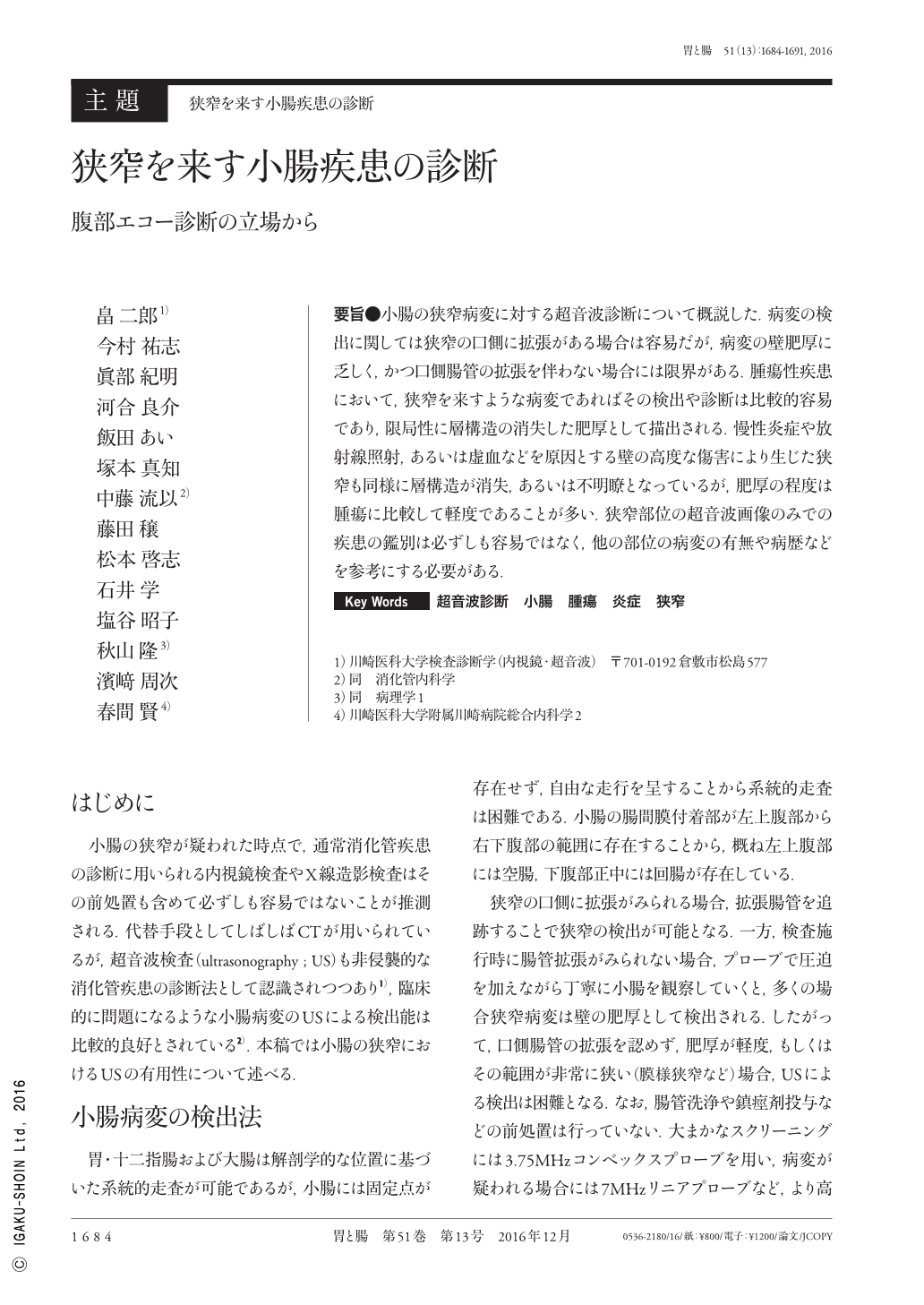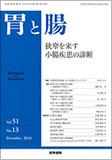Japanese
English
- 有料閲覧
- Abstract 文献概要
- 1ページ目 Look Inside
- 参考文献 Reference
要旨●小腸の狭窄病変に対する超音波診断について概説した.病変の検出に関しては狭窄の口側に拡張がある場合は容易だが,病変の壁肥厚に乏しく,かつ口側腸管の拡張を伴わない場合には限界がある.腫瘍性疾患において,狭窄を来すような病変であればその検出や診断は比較的容易であり,限局性に層構造の消失した肥厚として描出される.慢性炎症や放射線照射,あるいは虚血などを原因とする壁の高度な傷害により生じた狭窄も同様に層構造が消失,あるいは不明瞭となっているが,肥厚の程度は腫瘍に比較して軽度であることが多い.狭窄部位の超音波画像のみでの疾患の鑑別は必ずしも容易ではなく,他の部位の病変の有無や病歴などを参考にする必要がある.
Here we discuss the sonographic diagnosis of small-intestinal stenotic lesions. Stenotic lesions are easy to diagnose when the oral side of the stenosis is dilated. On the other hand, small lesions showing subtle wall thickening without the intestinal distension are difficult to detect with ultrasound. Advanced cancers, malignant lymphomas, and metastatic tumors causing intestinal stenosis manifest as focal wall thickening without a layer structure. Intestinal stenosis due to other causes such as severe ischemia, chronic inflammation, and irradiation manifest as mild wall thickening without stratification. Therefore, it is often difficult to differentiate these diseases only by imaging of the stenotic lesion; hence, images of the rest of the intestinal tract and the patients' clinical history must be considered while making sonographic diagnoses. Because the advantage of ultrasound is its high spatial resolution, which can delineate transmural and even extramural changes, it should be considered as the first-line modality for diagnosing small-intestinal stenotic lesions.

Copyright © 2016, Igaku-Shoin Ltd. All rights reserved.


